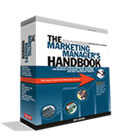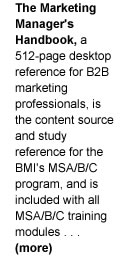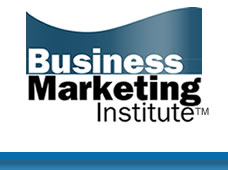


Tuesday Marketing Notes (Number 32—May 9th , 2006)
A B2B Marketing Newsletter for BMA Members
____________________________________________________________
MAKE SURE YOU CONTINUE TO RECEIVE EACH ISSUE OF TUESDAY MARKETING NOTES—CLICK HERE TO RENEW YOUR FREE SUBSCRIPTION
(NOTE: if you’ve already signed up previously at this link above, no need to do so again)
INDEX TO PAST ISSUES OF TUESDAY MARKETING NOTES:
Click here
Special Savings Promotion for BMA Members—Click here
–––––––––––––––––––––––––––––––––––––––––––––––––––––––
Using Postcard Decks to Build Profitable B2B Mailing Lists (Part 1)
by Eric Gagnon
Direct response marketing—by mail and by e-mail—is the cornerstone of most business-to-business marketing programs. And the most important element of your direct response program is your company’s (or client’s) mailing list of interested respondents to the ads, mailings, trade show appearances, Web site, and other activities in your marketing program.
Postcard decks are still one of the best ways to build strong mailing lists, fast—even in today’s age of Google AdWords and other online marketing. This week and next we’ll cover how to use postcard decks in your B2B marketing program, to help you build or enhance your own company’s mailing lists.
What They Are
Postcard decks are individual postcards, inserted and mailed in a small polyethylene or mylar envelope, to business, professional, trade and industrial mailing lists, usually by trade publications or third-party card deck marketing companies. Card decks are mailed to a large number and variety of mailing lists in an industry or profession—trade publication subscriber lists, association member lists, as well as low-grade compiled lists put together from business telephone directory listings, warranty card lists, and other sources.
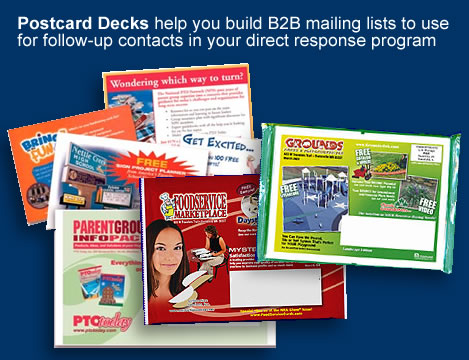
There are hundreds of postcard decks available for business, trade, and consumer marketers in the U.S., and there’s at least one card deck covering every major industry, business, profession, and trade category, including your company’s markets and industries. Many major trade publications also offer card deck mailing programs, consisting of one or more card deck mailings each year.
An executive or business professional who receives a card deck gets a thick packet of individual postcards, with each card promoting an advertiser’s product or service targeted to that particular business category or industry. For example, there are postcard decks targeted to the individual needs and interests of engineers, marketing managers, and industry executives. Most people who receive postcard decks in their business mail will at least open the packet and shuffle through this stack of cards, because card decks are perceived as being somewhat more substantial than the average piece of “junk mail.”
What Postcard Decks Can Do for Your Marketing Program
The secret to successful B2B marketing programs often means having the best mailing lists,and the best mailing lists are the ones you build yourself, by compiling lists of prospects who respond to your ads, reply to your mailings, and drop by your company’s trade show booth. Postcard decks supplement these other list-building activities by helping you bulk up your respondent and prospect lists quickly.
Once you’ve created a sizeable mailing list of potential prospects, your list becomes a slice of your market that gives you an open communications channel to the individuals on this list, and an opportunity for your company to “show what it knows,” by providing recipients useful, informative, and compelling downstream information not only on your product, but on applications and issues related to your company and its industry. This positions your company as an industry thought leader, and helps to establish it as the go-to company in its field in the minds of your potential prospects.
Postcard decks build big sales inquiry mailing lists—fast: As a business, trade, or industrial marketer, the sole reason to utilize card decks is to build and maintain a steady stream of sales leads to add to your company’s own prospect mailing lists. When using a card deck, your goal is to get as many reasonably qualified recipients as possible to fill out your postcard with their name, company, and address information, and to drop this card back in the mail to you—or, better yet—swing around in their chair, link to your unique URL, and sign up for your bounceback premium.
As you build this list, you can then mail subsequent mailing pieces to the names on your list, for followup by your company’s sales reps to further qualify each prospect.
Because they’re mailed to large numbers of lower-quality mailing list names in an industry, response generated by postcard decks tends to be of a lower quality than response generated by your company’s display advertising or other direct mail projects. However, what postcard deck mailings lack in quality is more than made up by the large quantity of leads they can generate.
If you’ve selected the right card deck and you’ve produced your card for maximum effect, you can often reach a 5-10% response. This means that on a professional, industry, or trade deck mailing to 20,000 names, you could receive 1,000 to 2,000 returned postcards and/or responses. There aren’t too many other ways to build a big list of prospects this fast, and this is why card decks can be a substantial boost to your marketing program, if you and your company’s sales reps can qualify and follow up on these leads quickly.
For B2B marketers, card decks are for list-building purposes only. They’re obviously not a large enough vehicle to tell an extensive sales story for complex B2B products, and you can’t expect to sell a product directly from them.
The Best Way to Use Card Decks to Generate Response: Send Something FREE
To get the highest postcard response, send something FREE: The key to getting the largest possible number of inquiries from postcard decks is to provide a free offer for a tangible item with perceived value to prospects in your marketplace. Your free offer or premium should make it easy to persuade a prospect to fill out the postage-paid postcard and drop it in his company’s outgoing mail bin back to you.
Examples of proven, successful card deck premium offers include:
• Information products: Relevant, problem-solving industry or technical white papers, reports, booklets or videos;
• Relevant printed premiums: Specialized printed premiums of interest to respondents, such as technical/industry wall maps, or technical reference charts;
• Technical data reference: Printed, specialized data reference and conversion slide charts or reference cards;
• Useful technical software: Specialized or technical problem-solving software on CD-ROM (or downloadable from a unique URL at a sign-up form on your Web site);
• Product applications video: Demonstration or product applications video on DVD (or accessible at a unique URL once the respondent fills out a sign-up form on your Web site)
• Product or materials samples: A free product sample
The most successful card deck premium offers share these characteristics:
• They are highly relevant to the business, technical, or professional interests of the card deck’s audience;
• They are items that are available only from your company;
• They present a high level of perceived utility to your card deck’s professional audience
If your free premium offer is seen by the recipient as being a unique and interesting item that helps them solve a common problem in their business, job function, or profession, the greater the chances are the recipient will respond by calling your company, linking to your company’s Web site, or filling out and mailing the postcard back to you.
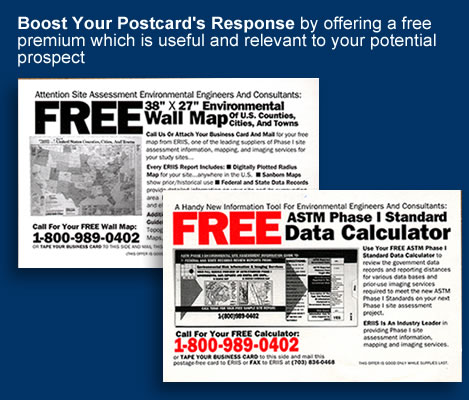
How to Find Postcard Decks for Your Industry
To search for card decks in your field, check first with your industry’s leading trade publications; many send out one or more card deck mailings to their subscriber lists each year. Mailing list brokers can also help you locate postcard decks targeted to your prospects and their industries. Of course, you can also do some Internet searches to see what other card deck opportunities are available for your market.
The best-quality postcard decks tend to be those produced by the recognized trade publications in your industry. These publications use their own subscriber lists, which will be highest quality lists. Other card deck mailers use lower-grade compiled lists, gathered from industry directories, trade show attendee lists, survey lists, etc. These lists vary widely in their accuracy, timeliness, and quality of sales response, and because of this they are priced lower than trade publication card decks.
When adding postcard deck mailings to your marketing program, start with a test to the best-quality deck you can find—again, this will usually be the trade publication’s card deck. Once you’ve measured your response, you can then roll out to other lower-grade card decks in your industry.
Next week, we’ll cover postcard deck layout, execution, and follow-up
techniques . . .
Comments? Questions? Send them to me at: eric@realmarkets.net
_____________________________________________________________
Eric Gagnon (eric@realmarkets.net), is president of GAA (www.realmarkets.net), a sales and business development consulting firm, and is the author of The Marketing Manager’s Handbook, the master study guide for the Business Marketing Association’s Marketing Skills Assessment, Skill Builder, and Certification (MSA/B/C) programs.
For more information on The Marketing Manager’s Handbook, available to BMA members at a special discount, link to:
http://www.businessmarketinginstitute.com/book.html
_____________________________________________________________
Test, Train, and Build Your B2B Marketing Skills for Better Sales Success: BMA Announces New Assessment, Training, and Certification for B2B Marketing Managers
For more information on the new BMA Marketing Skills Assessment, Skill Building and Certification (MSA/B/C) training and professional development program, visit http://www.businessmarketinginstitute.com
